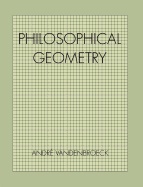
Philosophical Geometry
Kategorier: Ande, kropp och själ Ande, kropp och själ: tänkande och praktik Andlighet och religiös erfarenhet Aspekter av religion Filosofi och religion Hälsa, relationer och personlig utveckling Mysticism Mystik, magi och det ockulta Numerologi Religion och tro Spådomskonst
This aspect of the discipline was lost in modern times until studies such as those of Matila Ghyka rekindled an interest that culminated in R. A. Schwaller de Lubicz’s Pythagorean synthesis. Since it was essentially a rediscovery of unselfconscious modes of thinking, this synthesis did not pose the problem of foundations. Philosophical Geometry originated in the author’s perception of this problem while working with de Lubicz in Grasse, France, in 1960-61.
Written in 1972, Philosophical Geometry was conceived as a textbook and took shape in a teaching situation, individual elaboration of theory being the declared aim. Defined as “the activity of establishing a necessary conduct for mind through a set of signs denoting a necessary conduct of facts,” Philosophical Geometry approaches a universal theme to which the existence of every human being contributes a chapter. Philosophical Geometry is, and has been, an avenue toward inscription of such fundamental experience.






